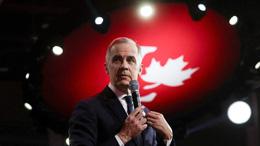New approach needed to reduce Ottawa’s mountain of debt

Commentary
By Jake Fuss and Grady Munro
Apparently, despite a few days of conflicting statements from the government, the Carney government now plans to table a budget in the fall. If the new prime minister wants to reduce Ottawa’s massive debt burden, which Canadians ultimately bear, he must begin to work now to reduce spending.
According to the federal government’s latest projections, from 2014/15 to 2024/25, total federal debt is expected to double from $1.1 trillion to a projected $2.2 trillion. That means $13,699 in new federal debt for every Canadian (after adjusting for inflation). In addition, from 2020 to 2023, the Trudeau government recorded the four highest years of total federal debt per person (inflation-adjusted) in Canadian history.
How did this happen?
From 2018 to 2023, the government recorded the six highest levels of program spending (inflation-adjusted, on a per-person basis) in Canadian history, even after excluding emergency spending during COVID. Consequently, in 2024/25, Ottawa will run its tenth consecutive budget deficit since 2014/15.
Of course, Canadians bear the burden of this free-spending approach. For example, over the last several years, federal debt interest payments have more than doubled to an expected $53.7 billion this year. That’s more than the government plans to spend on health-care transfers to the provinces. And it’s money unavailable for programs,s including social services.
In the longer term, government debt accumulation can limit economic growth by pushing up interest rates. Why? Because governments compete with individuals, families and businesses for the savings available for borrowing, this competition puts upward pressure on interest rates. Higher interest rates deter private investment in the Canadian economy—a necessary ingredient for economic growth—and hurt Canadian living standards.
Given these costs, the Carney government should take a new approach to fiscal policy and begin reducing Ottawa’s mountain of debt.
According to both history and research, the most effective and least economically harmful way to achieve this is to reduce government spending and balance the budget, as opposed to raising taxes. While this approach requires tough decisions, which may be politically unpopular in some quarters, worthwhile goals are rarely easy, and the long-term gain will exceed the short-term pain. Indeed, a recent study by Canadian economist Bev Dahlby found that the long-term economic benefits of a 12-percentage point reduction in debt (as a share of GDP) substantially outweigh the short-term costs.
Unfortunately, while Canadians must wait until the fall for a federal budget, the Carney government’s election platform promises to add, not subtract, from Ottawa’s mountain of debt and from 2025/26 to 2028/29 run annual deficits every year of at least $47.8 billion. In total, these planned deficits represent $224.8 billion in new government debt over the next four years, and there’s currently no plan to balance the budget. This represents a continuation of the Trudeau government’s approach to rack up debt and behave irresponsibly with federal finances.
With a new government on Parliament Hill, now is the time for federal policymakers to pursue the long-ignored imperative of reducing government debt. Clearly, if the Carney government wants to prioritize debt reduction, it must rethink its fiscal plan and avoid repeating the same mistakes of its predecessor.
Jake Fuss is Director of Fiscal Studies for the Fraser Institute. Grady Munro is a Policy Analyst at the Fraser Institute.









